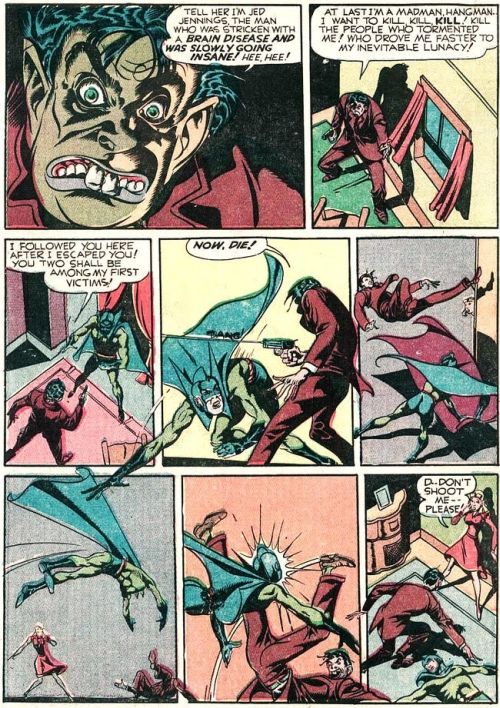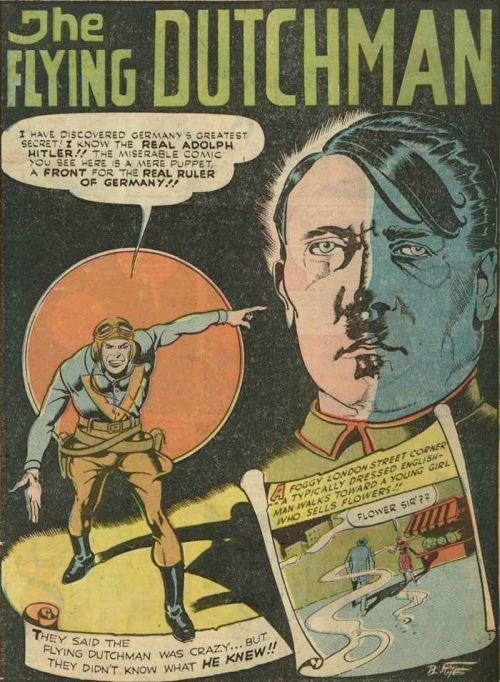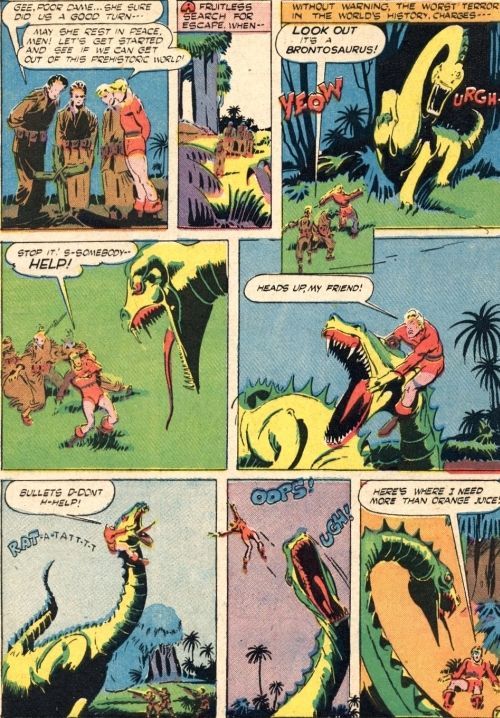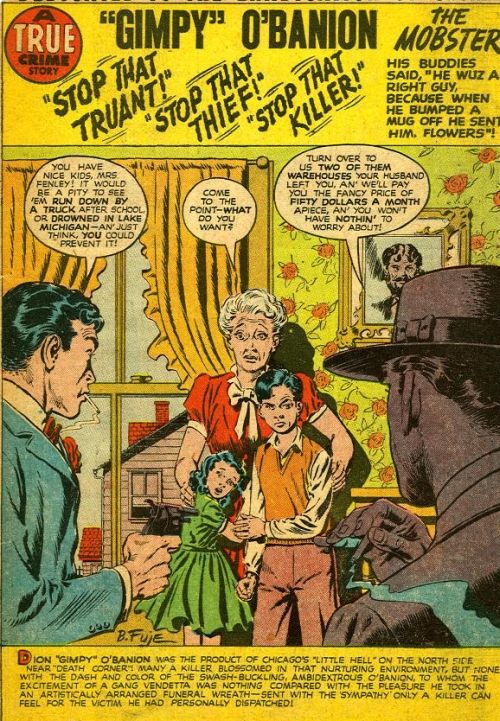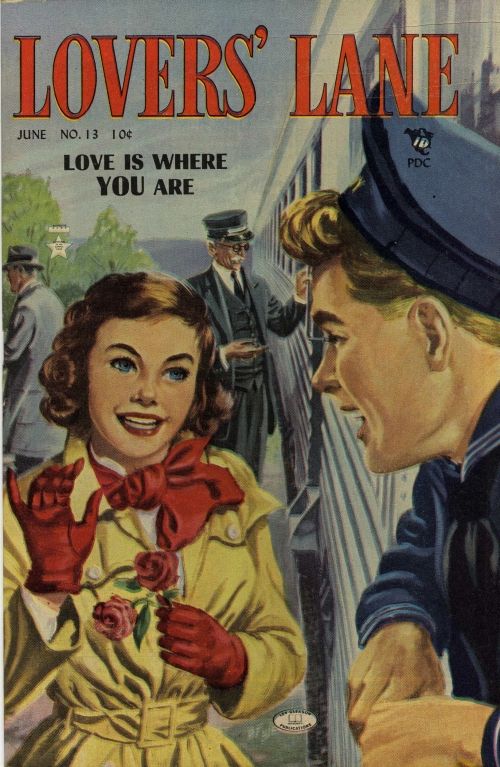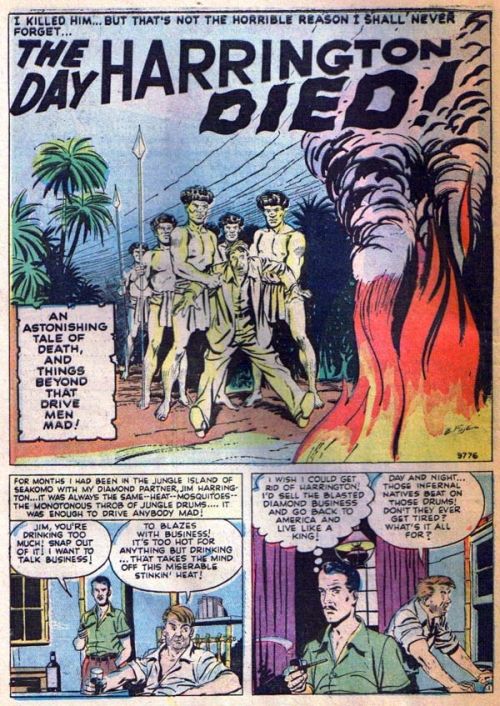If you have never heard the name Bob Fujitani, you are in for a real treat. As far as Golden Age greats go, he may be the most ‘under the radar’ of them all. His work is as prolific as it is exquisite, but his name rarely seems to come up in conversations about the all-time greats.
Born in Bob Fujitani was of Irish/Japanese descent and attended New York City’s American School of Design. He started work in comics shortly after America’s entry into World War Two, making quite a mark on the Hangman series for MLJ (future home of Archie Andrews). The Hangman strip was quite unique in its day, infusing elements of horror into a superhero book. Fujitani’s layouts are always interesting and his splash pages.
At the same time, Fujitani was working for Hillman Periodicals on the Flying Dutchman strip in Air Fighters Comics. I’ve seen conflicting credits on many of the covers from this title, so it is plausible that at least one could be credited to Fuje. This series has some pretty appalling examples of Japanese caricatures and I’ve often wondered how Fujitani felt about working on this type of comic at the time.
Later in the decade, Fujitani started producing work for Harvey Comics – contributing to the Zebra strip in Green Hornet and a long run on Shock Gibson in Speed Comics. The terrific action page above is from a Shock Gibson story. Some of these stories have been reprinted in various AC Comics publications.
Fujitani worked for a handful of other publishers including Ace and even Fawcett. He was also one of the numerous artists to get a shot at Holyoke’s Cat-Man Comics. From 1948 onwards, however, Fujitani began a consistent stint at Lev Gleason, drawing stories in numerous genres from crime to romance to humour. His work can be found scattered through just about any Gleason title, which are often quite affordable in lower grades.
He was also a talented painter, as is evidenced by the handful of painted covers he produced for Lev Gleason’s Lovers’ Lane in the early 50s.
Fujitani also contributed at least a half-dozen stories to a variety of Atlas anthology titles in the horror, war and western genres including the story from Astonishing #11 featured here. As far as I can tell, he never drew a single story for DC/National.
The introduction of the Comics Code Authority saw many publisher close shop or change tactics, but Fujitani continued to get work – contributing to four Prince Valiant stories in Dell’s Four Color series (were those new or reprinted newspaper material?) and a number of issues of King of the Royal Mounted. Today’s fans may most familiar with Fujitani for his work on early issues of both Turok, Son of Stone and Doctor Solar, Man of the Atom. His work on both series was incredibly strong and both series have aged very well. Please correct me if I am wrong, but I believe the last work did for a mainstream American comic book was the 5th issue of Doctor Solar, in which the costume is first introduced.
Like many of his contemporaries, Fujitani sought work on a comic strip. He has worked on several over the years including Judge Wright, Mandrake the Magician and various stints ghosting on the Flash Gordon strip and inking Dan Barry. Prior to his retirement in the 1990s, Fujitani was assisting on the Rip Kirby strip.
As far as I can tell, Bob Fujitani is still with us at age 90. I know that I've seen a small piece or two on him in Alter Ego, but not much has been written about the man. Perhaps that's because he left comics just before fandom took off. That's too bad, as I'll bet he has some interesting tales to tell.
For more comic book talk, stop by my blog: Seduction of the Indifferent.


